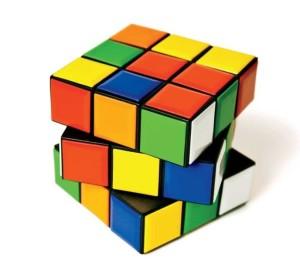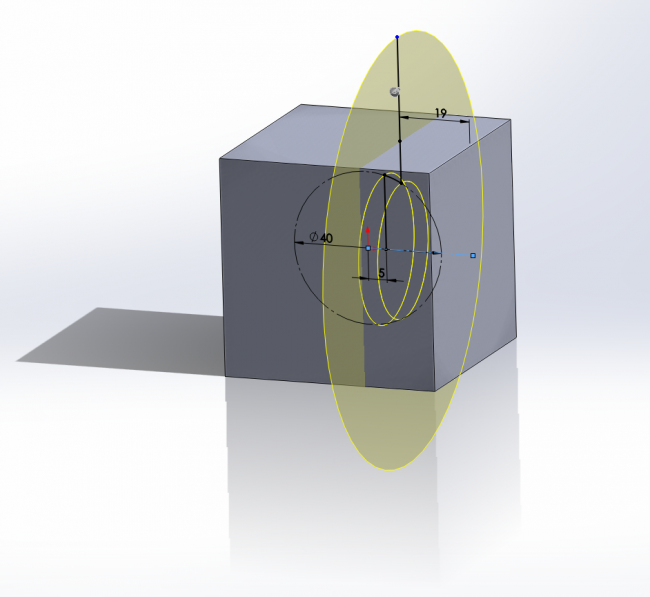 Since 1974, the Rubik’s Cube has become the most widely sold toy in the world. A large part of its fascination is due to how challenging it is to solve the puzzle, and we have seen many records set and shattered by people trying to quickly solve the puzzle (including inventing a robot that can do this in under a second). Take this already challenging puzzle and add another layer of challenge: why not design and 3D print your own puzzle? Yes, the pastime of designing, printing, and then obsessively solving and resolving twisty puzzles/Rubik’s Cubes has become popular enough — combining older puzzle forms with newer 3D technologies — that it’s high time we reviewed the best practices for this activity, isn’t it?
Since 1974, the Rubik’s Cube has become the most widely sold toy in the world. A large part of its fascination is due to how challenging it is to solve the puzzle, and we have seen many records set and shattered by people trying to quickly solve the puzzle (including inventing a robot that can do this in under a second). Take this already challenging puzzle and add another layer of challenge: why not design and 3D print your own puzzle? Yes, the pastime of designing, printing, and then obsessively solving and resolving twisty puzzles/Rubik’s Cubes has become popular enough — combining older puzzle forms with newer 3D technologies — that it’s high time we reviewed the best practices for this activity, isn’t it?
While there is the option to use software that will do it all for you, many people like the challenge of designing their own puzzles from scratch. A recent Sculpteo blog post reviews these best puzzle-making practices and explains exactly what is so enticing about this particular kind of challenge. Supposedly, it’s all about making the puzzle twist, a problem that a previous person had when he tried to 3D print the world’s largest Rubik’s Cube. To avoid a similar fate, according to Sculpteo, you’ll need to know a bit about how micro-mechanical systems work:
“Even if you have a very good idea about the different parts the puzzle will contain, the number of mechanical pieces can be very high and cause misalignment, high frictions, and instability in the puzzle. The prototype could be too tight and impossible to turn or too squishy and explode as soon as you try to solve it (the right term is to pop). Beyond puzzles, we’ll try to have a look here into micro-mechanical systems and how to design them.”
To illustrate these points, Sculpteo features the inner workings of the Rubik’s Cube. First it is cut with a special profile to ensure its different types of parts — 6 centers, 12 edges, and 8 corners — stay together. Mechanically, the puzzle should be slightly modified because some surfaces form an angle below 90°, and this causes jamming between all of the parts. To avoid this, the sketch has to be changed to contain angles over 90°. Now you can make sure that the Cube is printable, with the right hollowing rules and wall thickness.
After changing angles on the Cube sketch and checking it for printability, the next step is to set the mechanical clearance, which can also be tricky because a “tiny change in clearances can totally change your mechanism behavior.” Small clearance requires surfaces that slide together, whereas large clearance has parts that hover and do not require contact. Here, Sculpteo explains more about the significance of a third clearance option that reduces jamming of parts:
“With this clearance, you’ll get a smooth turning puzzle without any polishing required. If you’re planning to use the mechanism very often, if you design a cube for speed solving that you’ll use for all your competition, for instance, a different clearance should be used to anticipate the wear of plastic. Small clearance will be deleted (0mm/in) and large one reduced to 0,4mm / 0,016in. Clearance for jamming parts won’t be changed. If the puzzle seems hard to twist at the beginning, it’ll be smoother and smoother.”
So, the upshot here is that clearance is very important for smooth-functioning puzzles.
Finally, the edges of your design’s parts also need to be filleted for smooth functioning. Sculpteo recommends that “a 2-3mm / 0,08-0,12in fillet is a good value.” For appearance’s sake, you can also add “a 1mm / 0,04in fillet on the visible faces.”
Since you’ve reviewed the inner mechanics and best practices for designing a Rubik’s Cube puzzle of your own, now you only have a few more steps to go. You need to 3D print it, and, of course, solve the darn thing! Discuss in the 3D Printed Rubik’s Cube forum over at 3DPB.com.
Subscribe to Our Email Newsletter
Stay up-to-date on all the latest news from the 3D printing industry and receive information and offers from third party vendors.
Print Services
Upload your 3D Models and get them printed quickly and efficiently.
You May Also Like
Consolidation in AM: How 2025 Is Shaping the Industry’s New Normal
The first half of 2025 has been marked by a clear shift in the additive manufacturing (AM) industry. Companies are no longer just focused on developing new tech by themselves....
Etsy Design Rule Change Reduces Selection of 3D Printed Goods
Online marketplace Etsy has implemented a rule change requiring all 3D printed goods on the site to be original designs. The update to the site’s Creativity Standards states, ¨Items produced using...
U.S. Congress Calls Out 3D Printing in Proposal for Commercial Reserve Manufacturing Network
Last week, the U.S. House of Representatives’ Appropriations Committee moved the FY 2026 defense bill forward to the House floor. Included in the legislation is a $131 million proposal for...
Transforming From Tourist to Native: Duro CEO Michael Corr Explains Why the Company Rebuilt its PLM Software on AI
In these early innings of the AI boom, many market analysts have expressed concern that AI spend has gotten too far ahead of the technology’s proven ability to deliver significant...

































